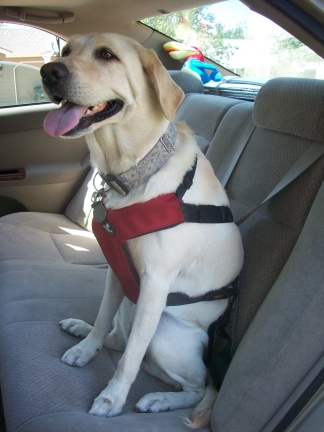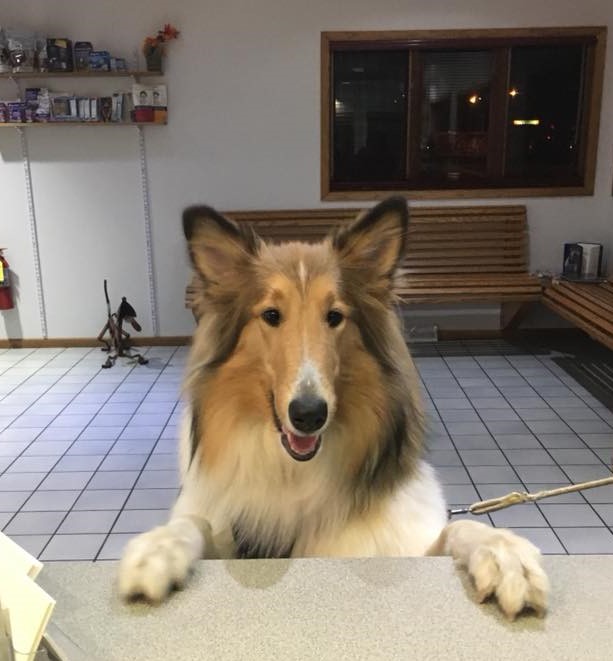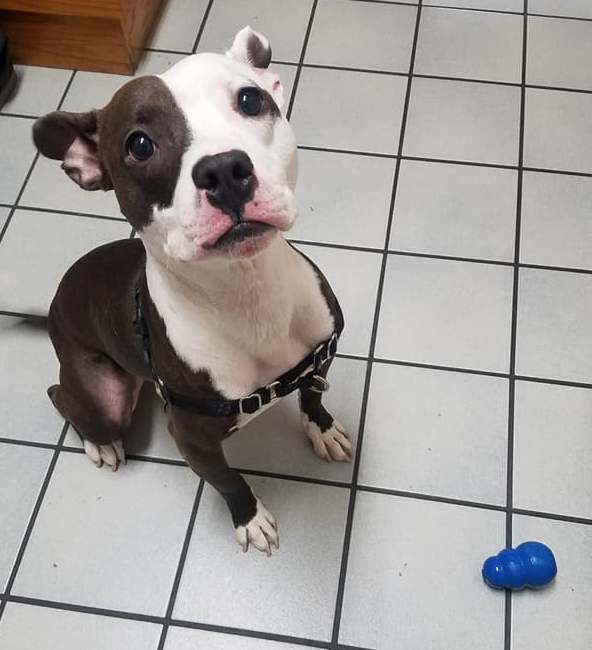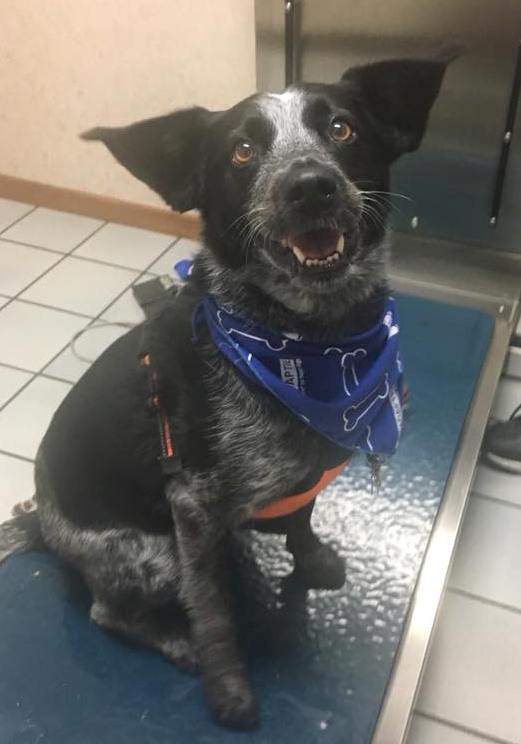Prepping for your Pet’s Visit
Click here for appointment tips for your dog.
Click here for appointment tips for your cat.
Click here for appointment tips for your exotic pet.
Prepping Anxious Dogs for a Fear Free Vet Visit
The first step of a Fear Free visit begins when you call the clinic for an appointment. If your pet is fearful or anxious during veterinary visits, please let our receptionists know! We can give you tips to make the visit easier.
Once your appointment is scheduled, keep in mind that a low-stress visit begins at home! From home to car to clinic we can help you to rethink habits to create a better experience.

Often, the only time a dog gets in the car is to come to the vet, so you can see why they may balk a bit! Try to condition your dog to like the car. You can have them get in and out of a parked car for treats and teach them where to sit. Remember that dogs do need to be secured in the vehicle. A hard-sided carrier or seat belt (they make them for dogs!) is ideal. We all love to let our dogs hang out the window, but this is a very bad scenario if you get into an accident. Neither you nor your children ride unrestrained; your dog should not either.
As a side note, if your dog gets carsick (drools excessively or vomits), let us know, we have medication that can help.

Once your dog is comfortable getting in and out of the car, go for short rides around the block. Progress to rides that end at happy places, like the ice cream stand or a park. You can even bring them to the clinic for a “happy visit.” Just tell the receptionist why you are here–they will give cuddles and treats and let your pet walk in and out of an exam room for a yummy reward.
Once you are ready for the trip to your dog’s appointment, remember to play calm, soothing music. Only classical music has been shown to reduce stress in dogs. If your dog is in a carrier, place it in a safe, level place, preferably on the floor behind the front seats. Covering the carrier may also help create a comforting environment. You can use Adaptil (a dog pheromone) to spray in the carrier and/or car 10-15 minutes before the trip. Remember to use a seat belt if your dog is not in a carrier.

Bring your dog hungry! Our yummy treats will be more likely to help. You can even bring a favorite treat from home. Bringing a favorite toy or stuffed kong may help to distract your pet as well.
Once you arrive, feel free to leave your dog in the car if he is more comfortable there. Just let us know you are here and our “concierge service” takes over! We can escort you directly to an exam room to avoid the chaos of the lobby. It’s all about your individual pet and what makes them feel the most secure.

In the clinic, we will spray a bandana with Adaptil for your dog to wear during his visit.
Our goal is to make every veterinary visit a Fear Free one!
Watch videos of low-stress procedures on our YouTube page.
How to Prepare for Your Cat’s Appointment
The Fear Free Way
To truly change the dynamic of cat veterinary visits, we will need your help! There are things you can do to begin the process of decreasing your cat’s anxiety and avoiding those dreaded car rides with a howling, stressed out kitty.
The classic story of finding and then wrestling a cat to get him into the carrier is the exact opposite goal of Fear Free. One thing we know about cats is they need safe spaces. This is the opposite of dogs, who need safe people. So, get ready for a lot of discussion about carriers.
What kind of carriers do cats prefer?
For cats, so much is about the carrier! It may surprise you to know that scientists have done studies on how cats prefer to be transported. So, we know A LOT about what your cat needs to feel safe. The scariest way for a cat is to carry them in your arms. They do not like being loose in the great outdoors, there are lots of scary things out there!
So, what kind of transportation do cats prefer? First, most cats do not like soft-sided carriers! They are flimsy and more likely to keep a cat off balance. A cat wants a hard-sided carrier with a non-slip surface inside. We also know cats REALLY don’t like swinging! Regardless of what kind of carrier, it is important to carry it from the bottom, not the top.
Something your vet and your cat will appreciate is a hard-sided carrier where the top opens easily, like the one pictured above. Oftentimes, we can do everything needed in the clinic with your cat comfortable in her carrier bottom.
Now for the hard part. Getting kitty in the carrier! We are challenging you to do this differently! Take your cat’s cozy, hard-sided carrier, and put it out in your house. No more storage in basements, garages, and attics. This is supposed to be your fur babies safe place, let’s make it so! Make it cozy with catnip, treats, and toys. In fact, feeding your cat his or her meals in the crate helps a lot. Cats take their time with changes, so it could be as long as several months before they enjoy using their carrier to relax in at home. Once this is accomplished, you will be shocked at how your cat’s car ride and vet visit changes!
Let’s review recommendations for carriers:
- Use a hard-sided carrier where the top comes off easily
- Put a non-slip surface inside
- Carry it from below, cats don’t like to swing!
- Cover the carrier so your cat can only see out the front
- Use Feliway before travel
- Put the carrier in the common area of your home and make it tempting
Car travel with anxious cats
Now you have the appropriate carrier and your cat is calmly waiting in it. Remember to carry the carrier from the bottom to give as much stabilization as possible. Spray Feliway in the car about 10-15 minutes before leaving.
Basic safety dictates that your cat is safely restrained in a carrier and ideally placed on the floor behind the front seat. Cover the carrier so your cat is not overwhelmed by passing cars and scenery. If you put the carrier on the car seat, face it forward and use a book to prop up the back end so it is level.
During the ride, we recommend calm, quiet music. Only classical music has been shown to reduce stress in cats.
Fear Free check-in
Once you arrive at the clinic, feel free to “check-in” with the front desk from your phone if you like! We offer a “concierge” service so that you and your pet can wait where you are comfortable until we have a room ready. Then we can escort you directly to a room without all of the chaos of the lobby! Just let the receptionist know that you have arrived and are in your vehicle – we will take it from there!
Our goal is to make every veterinary visit a Fear Free one!
Watch videos of low-stress procedures on our YouTube page.

